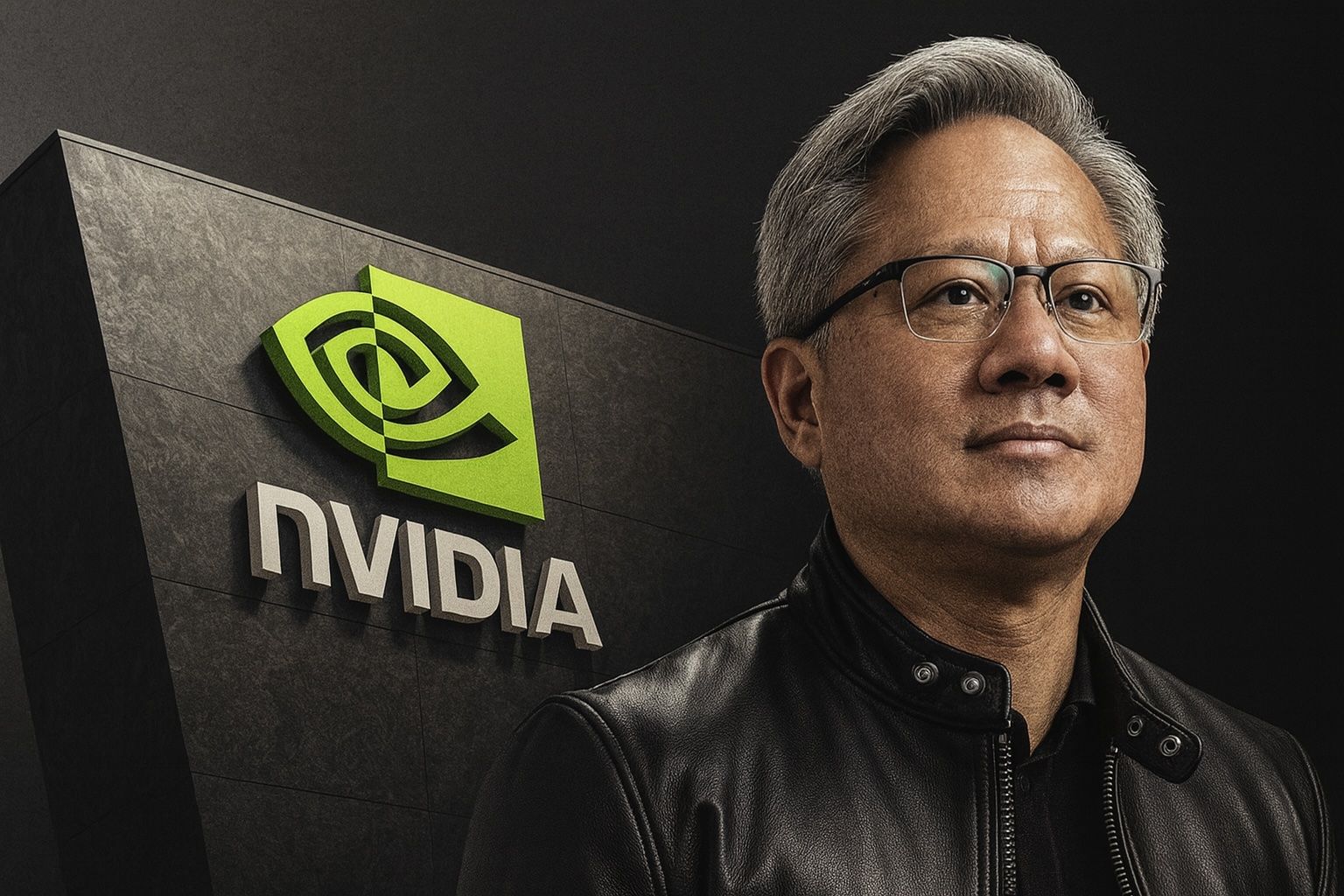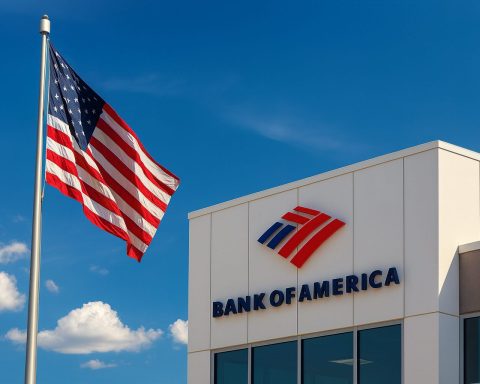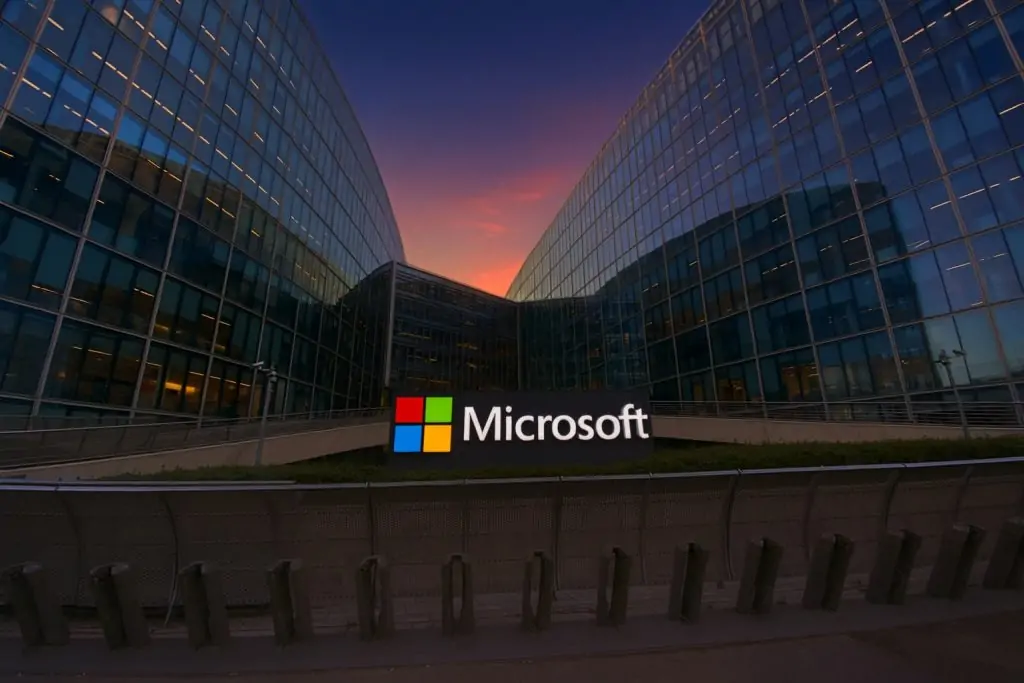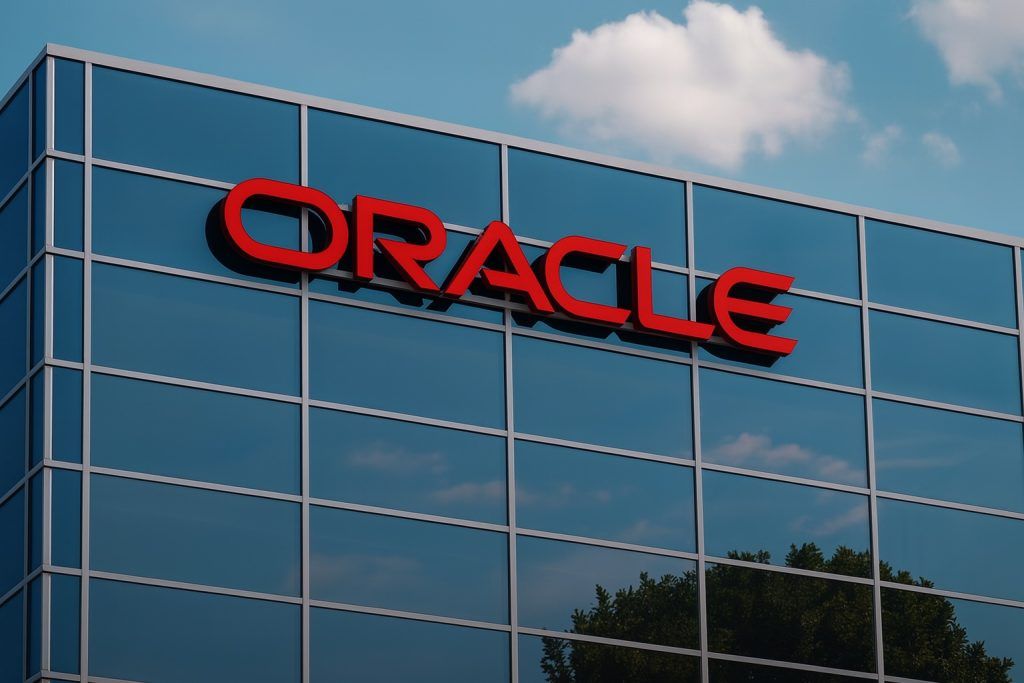Nvidia’s stock (NASDAQ: NVDA) is heading into the weekend under pressure, even after another quarter of spectacular AI‑driven growth.
By the end of Friday’s session, Nvidia shares were trading around the mid‑$170s — roughly 3–3.5% lower on the day, after opening near $181 and touching an intraday low just above $173. [1] That decline extends Thursday’s 3.1–3.2% post‑earnings drop, when the stock closed at $180.64 following a sharp intraday reversal. [2]
The selling comes despite record Q3 results: Nvidia reported $57.0 billion in revenue, up 22% quarter‑over‑quarter and 62% year‑over‑year, with data‑center revenue hitting $51.2 billion, up 66% from a year ago. Diluted EPS climbed to $1.30, compared with $0.78 in the prior‑year quarter. [3]
Below is a detailed look at what’s driving Nvidia stock today — and what investors are watching next.
1. Nvidia Stock Price Today: Key Numbers for November 21, 2025
Based on the latest daily data, Nvidia’s trading session on Friday, November 21, 2025 looks roughly like this: [4]
- Friday close (latest): about $174–175 per share, down ~3.4% vs. Thursday
- Thursday close: $180.64, down ~3.2% after earnings [5]
- Friday intraday range:
- Open: ~$181
- High: ~$182
- Low: ~$173
- Volume: ~128 million shares traded
- Market capitalization: around $4.4 trillion [6]
- Trailing P/E ratio (TTM): roughly 50–52x, depending on data provider [7]
- 52‑week range: roughly $86.62 (low) to $212.19 (high) [8]
- YTD return 2025: in the low‑to‑mid‑30% range, well ahead of the broader market [9]
In other words, NVDA is selling off hard this week, but it’s doing so from near‑record territory after an enormous multi‑year run. StatMuse and other performance trackers show Nvidia has returned roughly 440% over the past four years and more than 37,000% since 2015. [10]
2. Blowout Q3 Earnings vs. AI Bubble Fears
Record results
On November 19, Nvidia reported record third‑quarter fiscal 2026 results: [11]
- Revenue: $57.0 billion, +62% year‑over‑year
- Data Center revenue: $51.2 billion, +66% year‑over‑year
- Gaming revenue: $4.3 billion, +30% year‑over‑year
- Net income: $31.9 billion
- Diluted EPS: $1.30, up from $0.78 a year ago
The company also guided for Q4 revenue around $65 billion, ahead of Wall Street expectations, signaling that the AI spending wave has not yet peaked. [12]
CEO Jensen Huang doubled down on the idea that the AI boom is not a bubble, emphasizing that demand for Nvidia’s AI platforms — from Blackwell GPUs to networking and software — remains “accelerating,” not slowing. [13]
Why the stock is still falling
So why is the stock down again today?
Several overlapping narratives are hitting NVDA simultaneously:
- AI bubble anxiety.
A recent Bank of America fund‑manager survey found that 45% of respondents see an “AI bubble” as the biggest tail risk in markets, and more than half already consider AI to be in a bubble. [14] - Rate‑cut uncertainty and macro jitters.
U.S. stocks sold off sharply on Thursday as investors questioned whether the Federal Reserve will deliver another rate cut in December, with the Nasdaq dropping 2.2% and the Philadelphia Semiconductor Index off nearly 5%. Nvidia slid about 3.2% in that move. [15] - Expectation shock around options and positioning.
Heading into earnings, options markets were pricing an enormous $320 billion potential swing in Nvidia’s market value, implying about a 7% move in either direction — the largest expected post‑earnings move in the company’s history. [16]
Implied volatility on NVDA options remains elevated, with one options‑analytics provider showing IV above 50% and volume running at about 200% of average daily levels today. [17] - Profit‑taking after a historic run.
After NVDA’s massive multi‑year rally and an all‑time closing high above $207 in late October, some big investors have been trimming or exiting positions, especially hedge funds that see AI as a crowded trade. [18]
In short, the numbers are great — but expectations were even greater. The result is a classic “sell the news” dynamic layered on top of broader concerns about tech valuations and macro risk.
3. Fresh Nvidia News Today: Foxconn Supercomputer, ARK’s Buy, and New Wall Street Targets
While the stock is sliding, fundamental and strategic news flow around Nvidia today is overwhelmingly positive.
3.1. $1.4 Billion Foxconn Supercomputing Center in Taiwan
One of the day’s biggest headlines: Nvidia is teaming up with Foxconn on a $1.4 billion AI supercomputing data center in Taiwan. [19]
Key details:
- The facility is slated to go live in the first half of 2026.
- It will be Asia’s first data center powered by Nvidia’s new Blackwell GB300 chips and is expected to become Taiwan’s largest GPU cluster.
- Foxconn has created a new unit, Visionbay.ai, to run the center and offer “GPU‑as‑a‑Service” — effectively renting Nvidia compute to enterprises instead of requiring them to build their own facilities.
- Foxconn’s chairman told Reuters the company can produce around 1,000 Nvidia AI racks per week, with capacity expected to rise further. [20]
Strategically, this cements Nvidia’s pivot from just selling chips to enabling full‑stack AI infrastructure and services, a model that could smooth revenue and deepen customer lock‑in over time.
3.2. Cathie Wood’s ARK Invest Buys the Dip
Another notable signal today: Cathie Wood’s ARK Innovation ETF (ARKK) bought 93,374 Nvidia shares on Thursday, its first purchase of the stock since August 4. [21]
- After the trade, ARKK held about 505,000 Nvidia shares, making NVDA its 23rd‑largest holding — a relatively modest ~2.6% position, but still a vote of confidence from a high‑profile growth manager. [22]
- The buy came after Nvidia’s earnings‑day surge fizzled and the stock closed down 3.15% at $180.64 on Thursday. [23]
ARK’s move suggests that some active managers see the post‑earnings pullback as an opportunity rather than the end of the AI story.
3.3. Wall Street Races to Raise Nvidia Price Targets
If you just read the analyst notes today, you’d never guess the stock was sliding:
- Goldman Sachs and JPMorgan have both raised their 12‑month price target on Nvidia to around $250 per share while reiterating bullish ratings, emphasizing Nvidia’s dominance in AI accelerators and data‑center platforms. [24]
- Bank of America previously boosted its target to $275 and continues to list Nvidia as a top pick in the semiconductor space. [25]
- A round‑up of analyst forecasts shows 42 analysts covering Nvidia with a consensus “Strong Buy” rating and an average price target around $240–$250, implying roughly 30–35% upside from current levels. [26]
Barron’s notes that the average target price tracked by FactSet has risen from roughly $234 to about $250 after this week’s earnings, even as the stock has sold off. [27]
Separately, MarketBeat reports that Oppenheimer & Co., a long‑time bull on Nvidia, has nudged its stake higher to more than 1.26 million shares, making NVDA the firm’s third‑largest position and representing about 2.6% of its portfolio. [28]
The net message from the Street: short‑term volatility, long‑term optimism.
4. Is Nvidia in an AI Bubble or a “Cheaper” Mega‑Cap?
The core debate around Nvidia today is not whether it’s a great business. It’s what price investors should pay for that greatness.
Valuation snapshot
On today’s numbers, several data providers put Nvidia’s trailing P/E ratio in the high‑40s to low‑50s, with a market cap around $4.4 trillion and a 52‑week high near $212. [29]
Yet on forward earnings, projections drop that multiple significantly over the next few years. Nasdaq’s P/E forecast data shows estimated P/E ratios sliding from roughly the low‑60s on 2025 actuals to the mid‑20s by 2028 as profits catch up with the share price. [30]
One Seeking Alpha columnist argues that Nvidia is now the “second‑cheapest” stock in the so‑called Mag 7 on a forward P/E basis after the recent pullback, despite its nose‑bleed valuation by traditional metrics. [31]Another note titled “Everyone Knows There’s a Bubble” contends that a forward P/E around 25 and a PEG ratio under 1 can still be reasonable if Nvidia sustains its current growth trajectory. [32]
In other words, whether Nvidia is overvalued depends heavily on what you believe about long‑term AI demand:
- If AI infrastructure investment keeps compounding at today’s pace for many years, current prices may look conservative in hindsight.
- If AI spending slows, or if competition compresses margins, today’s valuation could prove very demanding.
Bubble fears are real — and measurable
Those concerns are not just theoretical:
- The Bank of America survey showing AI bubble worries as the top market risk has gained wide attention. [33]
- Reuters columnist Jamie McGeever highlighted how Nvidia’s blowout results were followed by a “wild rollercoaster ride” in markets on Thursday, with tech and semiconductor indices sliding hard as investors questioned whether AI capex can keep growing at this pace. [34]
The VIX volatility index has spiked into the mid‑20s this week, and MarketWatch notes that Nvidia’s options were again overpriced heading into earnings, indicating investors were paying up for protection or speculation around big moves. [35]
5. Fundamentals Still Look Exceptionally Strong
Against that backdrop, the raw fundamentals are hard to ignore.
From Nvidia’s own filings and recent analyst commentary: [36]
- Revenue growth:
- Q3 revenue up 62% year‑over‑year to $57.0 billion
- Data‑center revenue up 66% to $51.2 billion
- Profitability:
- Net margin above 50%
- Return on equity above 100%
- Balance sheet:
- Debt‑to‑equity around 0.08
- Quick ratio near 3.6 and current ratio above 4.2, indicating substantial liquidity
- Scale and customers:
- Deep partnerships with hyperscalers (Microsoft, Google, Oracle, xAI and others) to build national‑scale AI infrastructure, plus a new strategic collaboration with OpenAI involving at least 10 gigawatts of Nvidia systems. [37]
Layer on top of that the new Foxconn partnership, which reinforces Nvidia’s strategy of building “AI factories” and GPU‑as‑a‑Service models in multiple regions, and the long‑term growth story remains intact. [38]
6. What Today’s Move Could Mean for NVDA Investors
Putting it all together, November 21, 2025 looks like a classic reset day for Nvidia:
- The stock:
- Down roughly 6–7% over two sessions after earnings, back toward the mid‑$170s
- Still up more than 30% year‑to‑date and sitting well above its 52‑week low
- The story:
- Earnings, margins and guidance are arguably stronger than ever
- Yet sentiment around AI valuations and macro risks is deteriorating, leading to profit‑taking and higher volatility
For short‑term traders, the elevated options volume and implied volatility mean that swings in either direction could be amplified in the days ahead, especially as investors parse new Fed commentary, macro data, and any follow‑up color from management. [39]
For long‑term investors, today’s action highlights a familiar tension:
- On one side, record growth, high profitability, and new infrastructure deals such as the Foxconn data center and expanded hyperscaler partnerships. [40]
- On the other, rich valuations, heavy concentration of AI trades, and survey‑measured concerns that markets may be in or approaching a bubble. [41]
7. What to Watch Next
Looking beyond today’s tape, key watch‑items for Nvidia stock include:
- AI capex from hyperscalers and enterprises
Are cloud providers and large enterprises still increasing their AI infrastructure budgets into 2026 and 2027, or do we start to see delayed projects and slower order growth? - Execution on Foxconn and other “AI factory” projects
Investors will want to see concrete milestones as the $1.4 billion Taiwan supercomputing center progresses toward its 2026 launch, and how GPU‑as‑a‑Service economics show up in Nvidia’s revenue mix. [42] - Regulatory and export‑control developments
Any new U.S. export rules on advanced GPUs, or retaliatory measures from China or other regions, could reshape Nvidia’s geographic growth profile. - Valuation vs. growth trajectory
With forward P/E ratios projected to compress as earnings ramp, the key question is whether Nvidia can keep hitting or beating the aggressive growth path analysts have penciled in. [43]
Important Note
This article is for informational and news purposes only and does not constitute financial advice, investment recommendation, or an offer to buy or sell any securities. Nvidia stock is volatile and highly valued; always do your own research and consider consulting a licensed financial adviser before making investment decisions.
References
1. www.investing.com, 2. www.nasdaq.com, 3. investor.nvidia.com, 4. www.investing.com, 5. www.nasdaq.com, 6. www.marketbeat.com, 7. www.macrotrends.net, 8. www.marketbeat.com, 9. finance.yahoo.com, 10. www.statmuse.com, 11. investor.nvidia.com, 12. www.thetimes.com, 13. www.thetimes.com, 14. www.investopedia.com, 15. www.reuters.com, 16. www.reuters.com, 17. optioncharts.io, 18. www.macrotrends.net, 19. coincentral.com, 20. coincentral.com, 21. www.tradingview.com, 22. www.tradingview.com, 23. www.tradingview.com, 24. www.tipranks.com, 25. www.marketbeat.com, 26. stockanalysis.com, 27. www.barrons.com, 28. www.marketbeat.com, 29. www.marketbeat.com, 30. www.nasdaq.com, 31. seekingalpha.com, 32. seekingalpha.com, 33. www.investopedia.com, 34. www.reuters.com, 35. www.marketwatch.com, 36. investor.nvidia.com, 37. investor.nvidia.com, 38. coincentral.com, 39. optioncharts.io, 40. coincentral.com, 41. www.investopedia.com, 42. coincentral.com, 43. www.nasdaq.com










